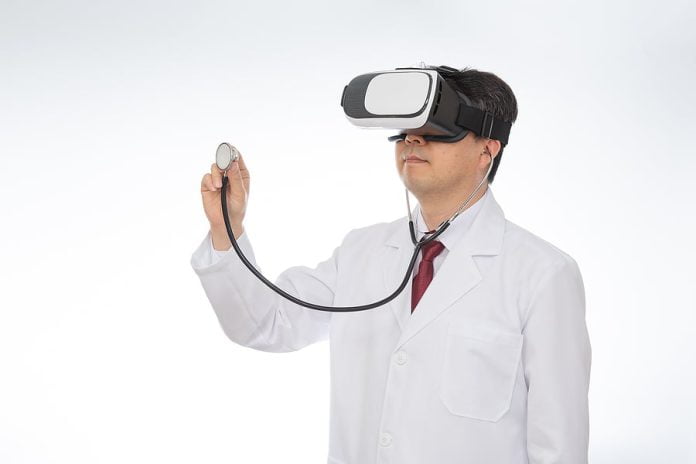Opened in February 2020, one of America’s first 5G-enabled hospitals has proved its worth through the challenges of the ongoing COVID-19 epidemic.
The Veterans Affair’s Palo Alto Healthcare System is the California-based hospital tapped to house the work through its “Project Convergence”, in which Verizon provides a 5G network backbone, and Microsoft offers its HoloLens information delivery platform and headset that’s used with imaging software from Medivis, enabling officials to transform complex health information into interactive 3D holograms, models and overlays.
The relevance of these capabilities to the electronic security industry revolve around how bandwidth-heavy 3D medical imaging is, and the way in which the VA application is being successfully used, not only for real time diagnosis, but for enterprise-wide education and training.
Dr. Thomas Osborne, director of VA’s National Center for Collaborative Healthcare Innovation, told Nextgov recently that COVID hit during the initial 5G roll-out and this distracted from the 5G project, as the team focused on ensuring the performance of existing infrastructure and to bolster the healthcare function of the facility to support the stricken community.
The standalone, zero-trust system delivered by Verizon provides advanced wireless capabilities in a defined area in the hospital, and there’s a plan to relay 5G signal across the hospital’s campus by the end of the year to integrate 5G-enabled innovation into surgical care. Relvant for security integrators and engineers, the team found moving 5G through a cluttered environment was likely to required sections of fire optic support.
Through its partnership with Medivis, VA aimed to re-pivot 5G plans to accelerate solutions to pandemic-induced needs through augmented reality and artificial intelligence to advance surgical and health care visualization. The capabilities include education and training, and medical use cases.
“If you consider that a picture’s worth 1000 words, then a 3-D holographic image you can manipulate in space and time is worth maybe a million (words),” Osborne said. “It brings things to life in ways that you just can’t imagine.”
Osborne explained that the team recently used the system to expand a model of a human body “to the size of a giant 3 stories tall.”
“You could walk into the rib cage and the heart, and you could feel the different parts and the pieces in sort of a very intuitive way where you became interactive—it almost became like you personified some of these pieces, so it’s much more intuitive and easy to learn,” Osborne explained.
What was most telling about the 5G upgrade from the point of view of security people was that the possibilities didn’t just overcome the loss of focus caused by COVID-19, they reframed the way challenges of the pandemic could be managedm suggesting similar benefits are likely to flow into security applications.
“Innovation is a work in progress by definition,” Osborne said. “There’s stuff that we know we want to do and there’s stuff that we haven’t even thought of yet that’s going to be important.”
#sen.news









